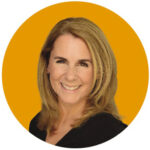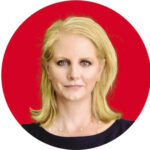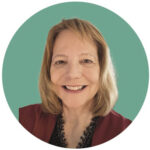In the months since the Covid-19 public health emergency, we’ve wondered how professional caregiving has changed. Here, representatives from six care businesses share their experiences and insights, as well as how they’re moving forward.

What is the no. 1 thing you learned from the pandemic?
 Jessica: The crucial role that socialization plays in the healing process and its contribution to sustaining overall health and wellness. For example, congregate dining can lead to increased appetite by providing cueing and a sense of belonging. Thus, the dining experience aids in optimal nutrition. In addition, facial expressions and mouth movement can be critical. However, when staff is masked, and residents were eating alone, nutrition suffered. As a dietitian, I know firsthand that if a resident does not have proper nutrition, this can lead to weight loss, skin breakdown, and varying other health ailments. Not only is socialization beneficial for nutrition, but the interactions with peers during the dining experience can aid in a sense of belonging and wellbeing.
Jessica: The crucial role that socialization plays in the healing process and its contribution to sustaining overall health and wellness. For example, congregate dining can lead to increased appetite by providing cueing and a sense of belonging. Thus, the dining experience aids in optimal nutrition. In addition, facial expressions and mouth movement can be critical. However, when staff is masked, and residents were eating alone, nutrition suffered. As a dietitian, I know firsthand that if a resident does not have proper nutrition, this can lead to weight loss, skin breakdown, and varying other health ailments. Not only is socialization beneficial for nutrition, but the interactions with peers during the dining experience can aid in a sense of belonging and wellbeing.
 Jenny: People are resilient. Our caregivers and office staff were able to adapt to all the changes a non-medical home care agency now had to comply with in the field when working with their clients. PPE (personal protective equipment) now required, clients only want a vaccinated caregiver, reporting on how they feel each day and how their client feels each day. The caregivers and staff who made it through the pandemic are here to stay in the healthcare realm.
Jenny: People are resilient. Our caregivers and office staff were able to adapt to all the changes a non-medical home care agency now had to comply with in the field when working with their clients. PPE (personal protective equipment) now required, clients only want a vaccinated caregiver, reporting on how they feel each day and how their client feels each day. The caregivers and staff who made it through the pandemic are here to stay in the healthcare realm.
 Paisley: We were reminded during the pandemic of the importance of connection. Either for socialization or support, we needed to move quickly and become more intentional in finding new ways to be there for each other. Inability to come together and isolation has had lasting effects.
Paisley: We were reminded during the pandemic of the importance of connection. Either for socialization or support, we needed to move quickly and become more intentional in finding new ways to be there for each other. Inability to come together and isolation has had lasting effects.
 Cathy: Loneliness and isolation is extremely traumatic for seniors, especially those living with memory loss.
Cathy: Loneliness and isolation is extremely traumatic for seniors, especially those living with memory loss.
How has the way you care for people changed since the pandemic?
 Chris: One change in how we care for residents since the pandemic is educating residents on reporting any change in condition they may be having so they can be tested for Covid to help prevent outbreaks.
Chris: One change in how we care for residents since the pandemic is educating residents on reporting any change in condition they may be having so they can be tested for Covid to help prevent outbreaks.
 Paisley: We learned it is ideal to offer services and programs both virtually and in-person when we are able. For some this is a preference, and for others, it is a necessity. For example, offering a counseling session through telehealth allows us to reach more clients and broadens the opportunity for a client to receive a service they may not have access to otherwise.
Paisley: We learned it is ideal to offer services and programs both virtually and in-person when we are able. For some this is a preference, and for others, it is a necessity. For example, offering a counseling session through telehealth allows us to reach more clients and broadens the opportunity for a client to receive a service they may not have access to otherwise.
 Cathy: We have a greater understanding of the mind-body connection, and how loneliness and sadness can negatively impact people’s health.
Cathy: We have a greater understanding of the mind-body connection, and how loneliness and sadness can negatively impact people’s health.
 Danielle: The care hasn’t changed; I do think it means more, means something different now. I would have never thought that hospice work was particularly brave before, but I found out I work with a staff of courageous people.
Danielle: The care hasn’t changed; I do think it means more, means something different now. I would have never thought that hospice work was particularly brave before, but I found out I work with a staff of courageous people.
 Jenny: Clients are often coming to us with more progressed issues. People are not needing companion care as much as actual healthcare in the home. For example, we are seeing clients with multiple co-morbidities, more medications, more daily health problems that caregivers need to be able to report and assist with when possible.
Jenny: Clients are often coming to us with more progressed issues. People are not needing companion care as much as actual healthcare in the home. For example, we are seeing clients with multiple co-morbidities, more medications, more daily health problems that caregivers need to be able to report and assist with when possible.
What are you doing differently?
 Jessica: The incorporation of wellness from a holistic perspective has emerged and become a pillar in our clinical care process: treating the whole person versus the disease state. This approach has allowed peers and residents to notice more readily significant changes in condition and/or cognitive status that family members may have pre-pandemic noticed and reported.
Jessica: The incorporation of wellness from a holistic perspective has emerged and become a pillar in our clinical care process: treating the whole person versus the disease state. This approach has allowed peers and residents to notice more readily significant changes in condition and/or cognitive status that family members may have pre-pandemic noticed and reported.
 Chris: When we have a Covid outbreak, the positive resident is isolated to their room. However, social activities, dining, and visitations are not suspended as they were during the pandemic.
Chris: When we have a Covid outbreak, the positive resident is isolated to their room. However, social activities, dining, and visitations are not suspended as they were during the pandemic.
 Cathy: The residents are no longer isolated in their rooms if there is Covid in their “house” or wing. The residents are free to wander within their house, sit in the living room with other residents and eat in the dining room with other residents. They are not allowed in the common areas for the entire building, but still have some freedom and stimulation in a modified way. Families are also free to visit while we have Covid in a “house” or wing.
Cathy: The residents are no longer isolated in their rooms if there is Covid in their “house” or wing. The residents are free to wander within their house, sit in the living room with other residents and eat in the dining room with other residents. They are not allowed in the common areas for the entire building, but still have some freedom and stimulation in a modified way. Families are also free to visit while we have Covid in a “house” or wing.
 Danielle: I think our priorities became more apparent and encouraged us to find surprisingly creative solutions. A patient is actively dying and has a Covid-positive relative who needs to say their final goodbyes? We rolled our patients’ beds out onto the patio to facilitate a visit in open air. We are now more nimble, ready to surmount obstacles to facilitate what matters the most.
Danielle: I think our priorities became more apparent and encouraged us to find surprisingly creative solutions. A patient is actively dying and has a Covid-positive relative who needs to say their final goodbyes? We rolled our patients’ beds out onto the patio to facilitate a visit in open air. We are now more nimble, ready to surmount obstacles to facilitate what matters the most.
What are your biggest challenges in caring for people?
 Jessica: There is a stigma on nursing homes as a result of the pandemic. Images of loved ones behind closed doors, birthday parties missed, and people dying alone have contributed. Nursing homes are now thought of as a place not to thrive but to slowly disappear and be forgotten. Many places have closed their doors, taken on new ownership, or changed names to survive in this setting. From an occupancy perspective, without residents to serve there is not clientele or demand for the operation. In fact, more people chose to direct-admit to home with home health. The residents that choose to admit to skilled nursing centers are coming in sicker post-pandemic, with higher co-morbidities, and resulting [in an] increase in hospital readmissions. The increased acuity is directly related to delayed procedures during Covid or missed visits to the doctor’s office.
Jessica: There is a stigma on nursing homes as a result of the pandemic. Images of loved ones behind closed doors, birthday parties missed, and people dying alone have contributed. Nursing homes are now thought of as a place not to thrive but to slowly disappear and be forgotten. Many places have closed their doors, taken on new ownership, or changed names to survive in this setting. From an occupancy perspective, without residents to serve there is not clientele or demand for the operation. In fact, more people chose to direct-admit to home with home health. The residents that choose to admit to skilled nursing centers are coming in sicker post-pandemic, with higher co-morbidities, and resulting [in an] increase in hospital readmissions. The increased acuity is directly related to delayed procedures during Covid or missed visits to the doctor’s office.
 Paisley: Finding staff for some roles is still a challenge. There has been a shift in workplace culture since the pandemic, with an increased expectation for remote or hybrid work. In some roles this is not possible, and team members need to be onsite.
Paisley: Finding staff for some roles is still a challenge. There has been a shift in workplace culture since the pandemic, with an increased expectation for remote or hybrid work. In some roles this is not possible, and team members need to be onsite.
 Danielle: Insurance. My no. 1 focus is taking care of people and their holistic needs. Sometimes insurance affects a plan of care. Hospice is life and death — you only die once. We work very hard to give people the most dignified, comfortable, meaningful death possible while rigorously observing insurance requirements. I wonder how much more care folks could receive if insurance didn’t dictate so much.
Danielle: Insurance. My no. 1 focus is taking care of people and their holistic needs. Sometimes insurance affects a plan of care. Hospice is life and death — you only die once. We work very hard to give people the most dignified, comfortable, meaningful death possible while rigorously observing insurance requirements. I wonder how much more care folks could receive if insurance didn’t dictate so much.
Have there been any silver linings that have come out of the pandemic in terms of how you care for your clients?
 Jessica: The emergence of treating the whole person, their spirit, and not just the disease. This has been accomplished through prioritization of family visits, activities, social outings, pet therapy, religious services, and psychology services.
Jessica: The emergence of treating the whole person, their spirit, and not just the disease. This has been accomplished through prioritization of family visits, activities, social outings, pet therapy, religious services, and psychology services.
 Cathy: Recognizing the need for socialization among seniors even during a pandemic, with safety cautions in place to the best of the ability of our staff. (It is impossible to get someone living with dementia to keep a Covid mask on.)
Cathy: Recognizing the need for socialization among seniors even during a pandemic, with safety cautions in place to the best of the ability of our staff. (It is impossible to get someone living with dementia to keep a Covid mask on.)
 Danielle: In some situations, people chose to sign on for hospice care sooner (where we often find families choose hospice “too late”) due to the ability to receive that care in the home versus being in rehab where people were separated from loved ones. This allowed us to improve the quality of life for many in their last days, weeks, and months and increased public awareness of how valuable home hospice can be.
Danielle: In some situations, people chose to sign on for hospice care sooner (where we often find families choose hospice “too late”) due to the ability to receive that care in the home versus being in rehab where people were separated from loved ones. This allowed us to improve the quality of life for many in their last days, weeks, and months and increased public awareness of how valuable home hospice can be.
 Jenny: We know we can survive anything. Our company had many personal family losses and the loss of many clients during the pandemic. We found a way to lift each other up in a time of despair. The love and support we still exude has not diminished since the pandemic.
Jenny: We know we can survive anything. Our company had many personal family losses and the loss of many clients during the pandemic. We found a way to lift each other up in a time of despair. The love and support we still exude has not diminished since the pandemic.
What do you wish had changed as the result of the pandemic, that still hasn’t changed?
 Jessica: Fewer people are choosing nursing as a career. I feel that if we market healthcare from a holistic and wellness approach, more people would find attractiveness and meaning in the career. When staffing became a crisis, and people admitting were more sick, more incidents of burn-out emerged. This shed light that as an industry, we do not need to treat only residents from a holistic approach but the care team as well. We have to prioritize care for the people that are caring for our more vulnerable population. This can be accomplished by a work-life balance mindset, sufficient staff-to-resident ratios, employee wellness programs, and scheduled paid-time-off for family life.
Jessica: Fewer people are choosing nursing as a career. I feel that if we market healthcare from a holistic and wellness approach, more people would find attractiveness and meaning in the career. When staffing became a crisis, and people admitting were more sick, more incidents of burn-out emerged. This shed light that as an industry, we do not need to treat only residents from a holistic approach but the care team as well. We have to prioritize care for the people that are caring for our more vulnerable population. This can be accomplished by a work-life balance mindset, sufficient staff-to-resident ratios, employee wellness programs, and scheduled paid-time-off for family life.
 Danielle: I strongly support nursing staff-to-patient ratio laws at the state level. Protecting nurses in this way empowers us to safely and effectively care for the public. Prevailing research shows that having minimum nurse-to-patient ratios led to improvements in mortality, readmissions, and length of stays. After what we endured and accomplished through Covid, we deserve it.
Danielle: I strongly support nursing staff-to-patient ratio laws at the state level. Protecting nurses in this way empowers us to safely and effectively care for the public. Prevailing research shows that having minimum nurse-to-patient ratios led to improvements in mortality, readmissions, and length of stays. After what we endured and accomplished through Covid, we deserve it.
 Paisley: Improved healthcare delivery, along with more funding to support care services, with easier access and more affordability.
Paisley: Improved healthcare delivery, along with more funding to support care services, with easier access and more affordability.
 Cathy: We still need more routine Covid testing readily available for everyone. While better than it was initially, it is still lacking in its availability to be done on a large scale with speed and accuracy.
Cathy: We still need more routine Covid testing readily available for everyone. While better than it was initially, it is still lacking in its availability to be done on a large scale with speed and accuracy.
 Jenny: I wish this brought more peace and kindness across the world. The suffering from Covid is much diminished, but our world keeps finding ways to fight each other.
Jenny: I wish this brought more peace and kindness across the world. The suffering from Covid is much diminished, but our world keeps finding ways to fight each other.
What do you wish people understood about care in the wake of the pandemic?
 Chris: There is not one right answer on how to handle Covid. Though there are general guidelines, every facility must adjust based on the size of community and type of residents that reside throughout
Chris: There is not one right answer on how to handle Covid. Though there are general guidelines, every facility must adjust based on the size of community and type of residents that reside throughout
the community.
 Paisley: The importance of advocacy for quality care both within the community and more globally. With funding of health and human services constantly changing, it is difficult for many to receive the care or support needed. Vital resources have been cut or compromised, and systems are overwhelmed.
Paisley: The importance of advocacy for quality care both within the community and more globally. With funding of health and human services constantly changing, it is difficult for many to receive the care or support needed. Vital resources have been cut or compromised, and systems are overwhelmed.
 Danielle: So much of what went right had to do with individual decisions made by brave, savvy, and sometimes very tired and scared healthcare workers due to lack of systemic planning. I hope people will choose to support policies that will ensure we are more prepared for catastrophic health events in the future.
Danielle: So much of what went right had to do with individual decisions made by brave, savvy, and sometimes very tired and scared healthcare workers due to lack of systemic planning. I hope people will choose to support policies that will ensure we are more prepared for catastrophic health events in the future.
 Jenny: I think we need to find programs and school funding to encourage our young generation to seek healthcare- and health-related jobs. Certain states have started free CNA [certified nursing assistant] schooling, starting with seniors in high school. Teaching the importance of the work and helping young people find a passion to help others. Taking a financial burden for the education of these positions may inspire more people to seek the jobs we so desperately need filled.
Jenny: I think we need to find programs and school funding to encourage our young generation to seek healthcare- and health-related jobs. Certain states have started free CNA [certified nursing assistant] schooling, starting with seniors in high school. Teaching the importance of the work and helping young people find a passion to help others. Taking a financial burden for the education of these positions may inspire more people to seek the jobs we so desperately need filled.